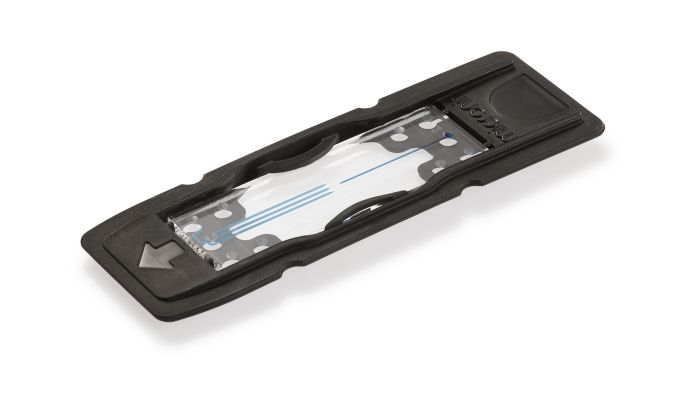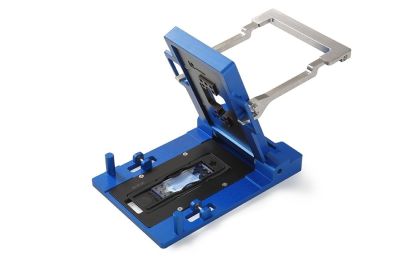shopping_basket
Focused flow droplet generator - nozzle 10 µm - with 175 µm bottom [Limited Edition]
SKU
11008260
Availability:
check_circle In stock
$889.15
per pack of 3
Pack of 3 focused flow droplet generator chips with a nozzle size of 10µm. This limited edition features a thin bottom with a thickness of 175µm.
For use in combination with our topconnect interfacing chipholder.
Pack of 3 Microfluidic Droplet Generator Chips – 10 µm Nozzle, 175 µm Thin Bottom Layer
Designed with precision and ease-of-use in mind, these microfluidic chips are ideal for researchers looking to produce highly consistent microscale droplets. Each chip features a 10 µm nozzle and a thin 175 µm bottom layer—similar in thickness to a #1.5 coverslip—making them perfect for high-resolution imaging.
Key Benefits:
- Generate droplets between 10–20 µm in diameter *)
- Only 175 µm to the imaging plane—ideal for high-resolution microscopy
- Symmetric nozzle and channel design ensures uniform droplet formation
- Stable operation across a wide range of droplet sizes and frequencies
- Crystal-clear, smooth channels for reliable visualization and flow
Whether you're working on single-cell analysis, digital PCR, emulsions, or foam research, these chips give you fine control over droplet formation. By tuning viscosity, surface tension, and flow rates, you can easily adjust droplet size and production rate.
Additional Features:
- Compatible with Oil-in-Water (O/W) droplet generation
- Can be surface-coated to support Water-in-Oil (W/O) systems
- Made from high-quality borosilicate glass—chemical-resistant and durable
Perfect for lab setups where reproducibility, precision, and optical clarity matter.
Note: This is a limited edition release of our thin-bottom droplet generator, based on a proven existing design. We’re using this early series to gather feedback from researchers like you—especially regarding additional observation features you'd like to see in future versions.
*) Obtained droplet sizes are based on a reference experiment with Silicone oil 5cSt and DI water combined with 2% v/v Tween 20 or Tween 80.
| Unit of measurement | pack of 3 |
|---|---|
| Coating | No coating (hydrophilic) |
| Chip material | Borosilicate glass |
| Fluids | Oil droplets inside a water flow (uncoated, hydrophilic surface) |
| Icon | Label | Description | Type | Size | Download |
|---|---|---|---|---|---|
 | Drawing Focused flow droplet generator - nozzle 10 µm - with 175 µm bottom [Limited Edition] | Drawing for the Focused flow droplet generator, nozzle size 10 µm and 175 µm bottom layer. | 259.7 KB | Download |
Customer Questions
We found other products you might like!
- Droplet generation setup - sideconnect (no pumps included)
From $1,012.42
To $4,045.14
- Droplet generation setup - topconnect (no pumps included)
From $2,097.90
To $12,570.27
- Basic microfluidic setup - topconnect (no pumps included)
From $2,097.90
To $26,510.19




